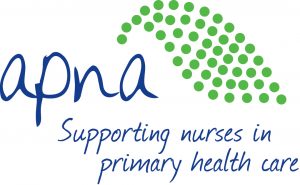
Intestinal Parasites
Beverley-Ann Biggs, Margaret Kay, Aesen Thambiran
Recommendations
- Check for eosinophilia
- If documented pre-departure albendazole therapy:
- no eosinophilia and no symptoms – no investigation or treatment required.
- eosinophilia – perform stool microscopy for ova cysts and parasites (OCP) followed by directed treatment.
- If no documented pre-departure albendazole therapy, depending on local resources and practices there are two acceptable options:
- empiric single-dose albendazole therapy (age >6 months, weight <10kg; 200mg; ≥10kg; 400mg). If eosinophilia at baseline re-check in 8 weeks. If eosinophilia persists perform stool microscopy for OCP
-
- perform stool microscopy OCP followed by directed treatment. Recheck eosinophils and stool microscopy OCP at 8 weeks after directed treatment.
- Refer if unable to find cause of eosinophilia.
- Treat pathological helminths with albendazole (age > 6 months, weight <10kg; 200mg; ≥10kg; 400mg) for three days, except for Ascaris lumbricoides, which only requires 400mg as a single dose (200mg in children >6 months and <10 kg). Mebendazole is an option for some parasites.136
- Treat giardiasis with tinidazole 2g as a single dose, (50mg/kg in children, maximum 2g), or metronidazole 2g daily for three days (30mg/kg in children, maximum 2g).148
- In people with positive stool microscopy, follow up with stool microscopy at 2-4 weeks after treatment and re-treat if necessary.
- Refer refractory cases to an ID specialist.
Overview
Background
Intestinal parasite infections are common in low resource and rural communities. The largest disease burden is caused by the soil-transmitted helminths (STH), with an estimated 2 billion people, or 30% of the world’s population, infected globally.150 Infections are common in tropical and subtropical areas, especially in Sub-Saharan Africa, the Americas, China and East Asia. The main species are Ascaris lumbricoides, Trichuris trichiura and the hookworms (Necator americanus and Ancylostoma duodenale). Giardia lamblia is a protozoan parasite that also commonly causes infection in these settings.
The prevalence of pathogenic stool parasites in people from refugee-like backgrounds reflects their socio-demographic and environmental circumstances, their countries of origin and transit, and availability of therapy.151,152
In a study of 26,956 African and South East Asian refugees between 1993 and 2007, at least one nematode was found on stool microscopy in 20.8% of 4,370 people who had not received pre-departure albendazole.117 In the 22,586 people who received pre-departure albendazole, only 4.7% had nematode infection.117,153 In 99 recent immigrants in New York, 40% had pathogenic parasites detected in stool.154 Australian prevalence data are summarised here, most studies have found the prevalence of pathogenic stool parasites is between 15–40%39,41,43,48,51,108,135,155– 159 and the most common pathogen is Giardia.
Screening
Previous ASID guidelines recommended stool microscopy if this was readily obtainable, or where symptoms were present.124 One stool sample will detect 90% of parasites.160
The voluntary Departure Health Check (DHC) has been implemented since 2005, and is now in place for most source countries19 for Australia’s offshore Humanitarian Programme intake. The uptake of the DHC is unclear; however, many offshore arrivals will have received albendazole as part of the DHC. The current guidelines consider the introduction of the DHC and recent data on the impact of albendazole on the prevalence and patterns of intestinal parasites.117,153 [/accordion-item]
History and Examination
Most patients are asymptomatic.136 Symptoms due to intestinal parasites may include diarrhoea, cramping and abdominal pain.
Investigation
Offer all an FBE to look for eosinophilia.
People with documentation of pre-departure albendazole treatment do not require screening for faecal parasites unless they are symptomatic or if they have eosinophilia.
In people with no documentation of pre-departure albendazole there are two acceptable options, depending on local resources and practices:
- Give empiric single-dose albendazole therapy (>6 months, <10kg; 200mg; ≥10kg; 400mg). This will be effective against many of the common parasites (see below). If they have eosinophilia at base line, re-check at 8 weeks post treatment. If eosinophilia unresolved, refer to specialist.
OR
- Perform stool microscopy for OCP. Obtain at least one fresh or fixed specimen delivered promptly to the laboratory. If there is a delay with delivery, stool should be in preservative (SAF). Laboratories are funded through Medicare for one OCP exam in seven days.
Common pathogenic parasites
For further information about individual parasites refer to the Centers for Disease Control and Prevention (CDC) website.
Common non-pathogenic parasites
Entamoeba coli
Blastocystis hominis (note: rarely implicated as a pathogen, discuss with ID)
Chilomastix mesnili
Management and Referral
Note: Albendazole is available at some refugee health and specialist hospital clinics, or on the PBS via streamlined authority for treatment of tapeworm and hookworm.
Hookworm (Ancylostoma duodenale, Necator americanus)
Albendazole 400mg daily for three days orally if weight ≥10kg (200mg daily if >6 months and <10kg).
Albendazole has been shown to be superior to mebendazole, but single dose treatment has suboptimal efficacy for hookworm infection.161–164 Treat any concurrent iron deficiency (see Anaemia, Iron Deficiency and Other Blood Conditions).
Round worm (Ascaris lumbricoides)
Albendazole 400mg orally if weight ≥10kg (200mg >6months weight <10kg) as a single dose.161,162 Corticosteroids are occasionally required in pulmonary ascariasis.
Whipworm (Trichuris trichiura)
Albendazole 400mg orally for three days orally if weight ≥10kg (200mg daily if >6 months and <10kg).
A three-day treatment regime had an efficacy of 83% in an RCT involving 175 children in Gabon.163 Single dose therapy has low efficacy for trichuriasis.161,164
Giardia lamblia
Treatment is with tinidazole 2g orally as a single dose (50mg/kg in children, maximum 2g), or metronidazole 2g daily for three days (30mg/kg in children, maximum 2g) (efficacy >90%).136,148
Albendazole 400mg daily for five days is probably as efficacious as metronidazole 500mg three times daily for five days, with fewer side-effects.165
Caution: Albendazole
Albendazole should be used with caution in patients who have symptoms and/or a travel history compatible with neurocysticercosis (such as epilepsy, central nervous system (CNS) symptoms, subcutaneous nodules, Taenia solium positive in faeces or serology) as treatment with albendazole alone can exacerbate CNS disease.
Follow-up
Repeat stool microscopy for OCP 2–4 weeks post therapy. Retreat if ova still present. Refer refractory cases for specialist management.
Considerations for Children, and for Pregnant and Breastfeeding Women
Albendazole is a class D drug. It should not be used in the 1st trimester of pregnancy. WHO recommends use in 2nd and 3rd trimester.166 In women who are breastfeeding pyrantel is an alternative to albendazole.
Avoid albendazole in children ≤6 months, and give 200mg dose if >6months and <10kg. Avoid mebendazole in pregnancy (class B3).
Australian therapeutic guidelines state both albendazole and mebendazole can be used during lactation.76
Seek specialist advice if uncertain, and refer children <2 years for specialist review if concerned.




